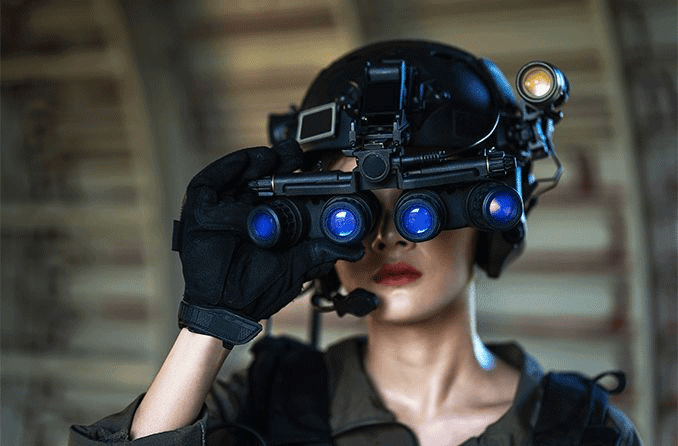Exploring the Technology That Amplifies the Night
Night vision goggles have transformed our ability to perceive the world in darkness. These remarkable devices, once confined to the realm of science fiction, are now widely used in various fields, from military operations to wildlife observation. Let’s delve into the fascinating technology behind night vision goggles and explore their diverse applications.
How Night Vision Goggles Work
Night vision goggles operate by amplifying available light, even in extremely low-light conditions. There are two primary types of night vision technology:
- Image Intensifier Technology:
- This is the most common type, relying on light-sensitive tubes to amplify ambient light.
- The process involves:
- Light Collection: The objective lens gathers available light, including starlight, moonlight, and infrared radiation.
- Image Conversion: The light strikes a photocathode, which converts photons into electrons.
- Image Amplification: The electrons are accelerated and multiplied by a microchannel plate, intensifying the signal.
- Image Reproduction: The amplified electrons strike a phosphor screen, emitting light that is visible to the human eye.
- Thermal Imaging Technology:
- This technology detects infrared radiation emitted by objects, creating an image based on heat signatures.
- Warmer objects emit more infrared radiation, appearing brighter in the image.
- Thermal imaging is particularly useful in complete darkness or through obscurants like smoke or fog.
Applications of Night Vision Goggles
Night vision goggles have found applications in a wide range of fields:
- Military and Law Enforcement:
- Enhancing situational awareness and target acquisition in low-light conditions.
- Conducting covert operations and surveillance.
- Search and rescue missions.
- Hunting and Wildlife Observation:
- Observing nocturnal animals without disturbing their behavior.
- Tracking wildlife populations and migration patterns.
- Security and Surveillance:
- Monitoring perimeters and detecting intruders.
- Enhancing security in low-light environments.
- Search and Rescue:
- Locating individuals lost in the dark.
- Navigating challenging terrain at night.
The Future of Night Vision Technology
Night vision technology continues to evolve, with advancements in image intensifiers, thermal sensors, and digital processing. Future developments may include:
- Improved Resolution and Sensitivity: Providing clearer and more detailed images in extremely low-light conditions.
- Smaller and Lighter Devices: Making night vision technology more portable and comfortable to wear.
- Integration with Other Technologies: Combining night vision with augmented reality and artificial intelligence for enhanced capabilities.
Night vision goggles have revolutionized our ability to perceive the world in darkness, opening up new possibilities for exploration, security, and scientific discovery. As technology advances, we can expect even more remarkable innovations in this field, further illuminating the night.

